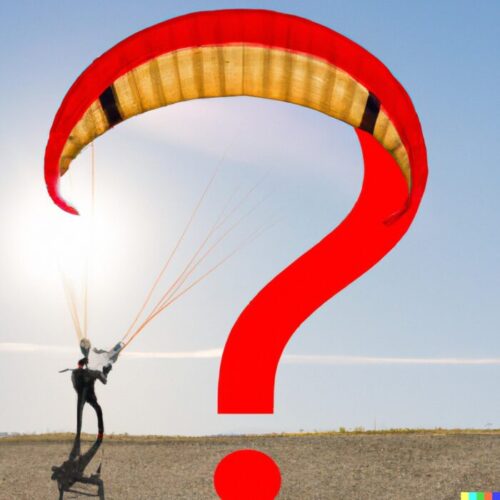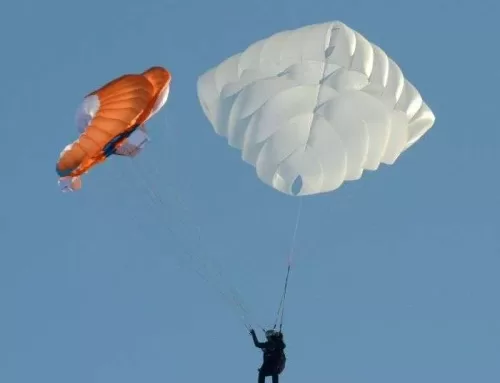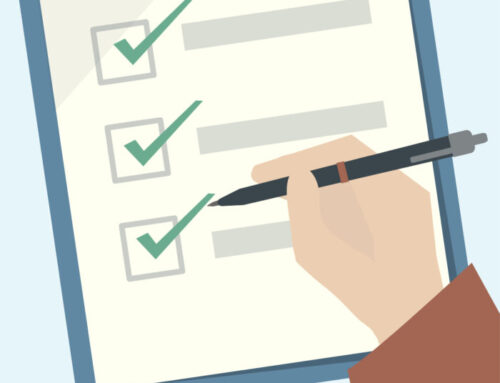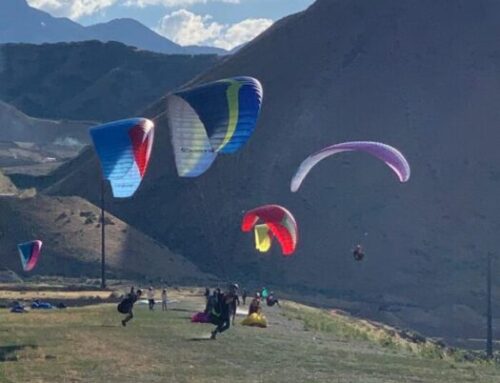When should you upgrade your wing?
How do you know when it’s the right time for you to fly a higher class of wing?
First ask yourself, why do I want to upgrade my wing? Some of your reasons might be. To get more performance, my old wing is worn out, I want to keep up with my friends that have already upgraded and more. Are you really ready to upgrade?
Upgrading your paraglider to a higher category depends on many things, including your skill level, flying experience, how often you fly, ground handling abilities and the type of flying you want to do. An honest assessment of yourself is required. Here are some things to consider when deciding whether to upgrade your paraglider:
Skill level
If you are a beginner or intermediate pilot, it is generally recommended that you stick with a paraglider in the lower categories until you have gained more experience and confidence. Higher category gliders are designed for more experienced pilots who have a greater understanding of how to handle the glider in challenging conditions. Spending more time on the paraglider you currently fly in more varied conditions, at different launches and at different times of the year will get you to a greater level of proficiency and comfort on your wing. Are you ready to leave that comfort and proficiency behind and start over on a new wing?
Flying experience
If you have been flying for a while and feel comfortable with your current paraglider, you may want to consider upgrading to a higher category glider to expand your flying capabilities. A higher category glider will allow you to fly in more challenging conditions (higher winds, etc.) but, this higher performance will demand greater skills at managing your wing.
Type of flying
The type of flying you want to do can also influence your decision to upgrade your paraglider. For example, if you want to fly in stronger winds or more turbulent conditions, a higher category glider may be necessary to maintain penetration into headwinds, stability and control. Cross country flying can benefit from a wing with better glide, giving you more opportunities to find lift and have better transitions.
Safety considerations
Safety should always be a top priority when flying. If you feel that your current paraglider is not providing the level of safety you need, it may be time to upgrade to a category glider that is better suited for your skill level and flying conditions. An upgraded wing could mean moving from a C wing to a B wing for some pilots. Ultimately, the decision to upgrade your paraglider should be based on a careful assessment of your skills, experience, and flying goals, as well as a consideration of safety factors. It is always a good idea to consult with a qualified instructor or experienced pilot before making any decisions about upgrading your equipment.
How do you know when it’s the right time for you to fly a higher class of wing?
The following is from Cross country magazine.
Greg Hamerton from Fly With Greg offers some ideas.
EN A AND B
For pilots with 0-50 hours, it’s best to focus on building skills on a high-A or low to mid-EN B. This is your progression wing, getting you up to the level of the BHPA Pilot rating or equivalent. Study your flying books, travel to different sites, get good at launching and landing in all conditions. Have fun.
After 50 hours of thermic flying (or about 100 hours of ridge soaring), think about moving to a high-B when you feel frustrated with the sluggish handling, lack of feedback and lack of speed. This probably means that XC flying is becoming your focus, but you still need passive safety because you’re not entirely sure you’ll do the right thing when exploring unfamiliar routes and flying into gnarly conditions. Complete your SIV course on this wing before going any further.
EN B TO EN C
After 100 hours of thermic flying, when you can stay in the air all day (nobody lands after you on your XC flights) you’re ready to go for something with a better top speed and especially the ability to cut through turbulence. The EN C class usually offers great handling because the designers don’t have to “rein the wing back” to pass the EN B limits. This makes for agile freedom and real flying stoke – this is often the happiest you will be with your flying. Safety is no longer ‘passive’. It relies on you making the correct responses and anticipating the movements of your wing.
EN D AND ABOVE
After 200 hours of thermic flying, you might want to make the jump to EN D if you are getting at least 100 hours of flying a year. Currency is everything here. These days we are mostly considering two-liners, which are cross-country machines, made for big, long fast transitions and big mountain air. But if you are not going to fly accelerated, stay on the C.
When you are getting into the top 10 places in competition tasks, and want that podium, you can look at playing the expensive game of CCC wings. Replacing your wing every season, getting hardly anything on resale, travelling the world with a massive bag (full comp racing harness, leading edge pillows, two reserves, instruments, etc.)
CCC paragliders are demanding aircraft with unmatched top speed, glide, climb, and vicious power in extreme situations. That’s OK if you’re an elite level pilot: just make sure you treat the wing with respect by getting excessive airtime, doing annual SIV training and regular wing services.
WHEN TO STEP UP
I prefer the mid-season upgrade, giving you the elevated airtime and skills to make a safe transition. Spring is not the best, as you will be getting into boisterous thermic conditions on a new wing after a long winter of limited flying. If you’re going to upgrade in the off-season, do it in autumn so you are again coming off a high currency level and have a long enough time to become familiar with the wing before conditions get sporty.
WHEN TO STEP DOWN
When should you think about stepping down? As you age, your reaction time increases so you rely more on passive safety, which suggests that getting a high-B is a smart move. Or if your flying time is limited to less than 100 hours a year, coming off the two-liner can reduce your risk and stress, especially if you have learned that you don’t need to compete on every glide when you make smart strategy moves.
Whatever you choose, make sure you love it – life is too short to fly “functional’” wings that don’t light up your smile.



